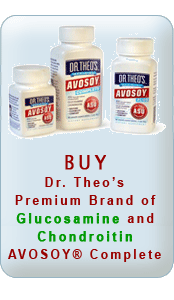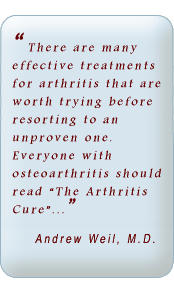Medical Evidence
Glucosamine Sulphate In Osteoarthritis:
A Systematic Review T.E. Towheed , Rheumatic Diseases
Unit, Queen's University, Canada
Background: Glucosamine sulphate
(GS) has been proposed as a slow acting drug in osteoarthritis
(OA). Randomized controlled trials (RCTs) evaluating the efficacy
of GS in the management of OA were systematically reviewed. A
MEDLINE search strategy, supplemented by a review of reference
lists, was used to help identify English language RCTs published
between 1966 and 1997. Quantitative review of the efficacy of
GS in OA was performed by meta-analysis. Effect sizes were used
to synthesize quantitative data that were measured with different
scales, and Peto Odds Ratios (OR) were used for pooling dichotomous
data. The search strategy identified a total of 9 RCTs. The average
duration of the RCTs was 5.4 weeks. The mean number of subjects
randomized subjects was 97. GS was administered orally in 5 RCTs,
parenterally in 2, and a combined oral/parenteral route was used
in 2 RCTs. 6 RCTs included subjects with only OA of the knee,
2 did not state the location of the OA, and 1 included subjects
with OA at multiple sites. In the 7 RCTs that compared GS versus
placebo, GS was always superior. 2 RCTs: compared GS versus ibuprofenGS
was superior in 1 and equivalent in 1. There were methodological
problems with these RCTs, including a lack of standardization
of the case definition of OA, and a lack of standardization of
outcome assessment. The combined effect size for pain relief,
comparing GS vs placebo (n = 5 studies) was 1.23 (95% CI, .93
to 1.53). The Peto OR, for overall favorable response comparing
GS versus placebo (n = 2 studies) was 2.04 (95% CI, 1.38 to 3.02).
GS was found to be extremely safe and superior to placebo, and
at least similar in efficacy to ibuprofen. Further studies are
needed to determine whether the route of administration of GS
is clinically important, and whether the therapeutic effect of
GS in OA is site specific.
Source: American College
of Rheumatology Annual Meeting November 10, 1998; Abstract: 995.
Poster Session D: Osteoarthritis: Clinical Trials




